

— Blogs —
—Products—
 Consumer hotline +8618073152920
Consumer hotline +8618073152920 WhatsApp:+8615367865107
Address:Room 102, District D, Houhu Industrial Park, Yuelu District, Changsha City, Hunan Province, China
Product knowledge
Time:2024-08-11 11:45:03 Popularity:2729
A soil moisture sensor, also known as a soil humidity sensor, is an electronic device specifically designed to measure the moisture content of soil. It provides scientific data on how wet the soil is by accurately sensing changes in soil moisture and converting these changes into quantifiable electrical signals. Such sensors play a vital role in agriculture, horticulture, environmental monitoring, and scientific research.
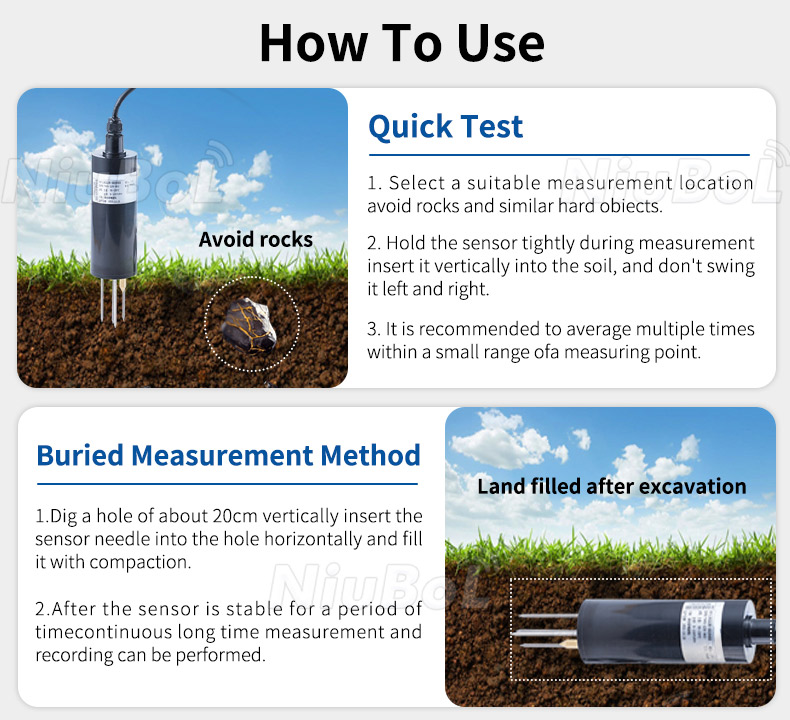
Using a soil moisture sensor is a relatively straightforward process that primarily involves selecting the right sensor, installing it, connecting it to a data acquisition system or controller, and performing the necessary calibrations and readings. The following are the basic steps in using a soil moisture sensor:
- Choose the type according to requirements: capacitive, resistive or more specialized TDR/FDR sensors, depending on accuracy requirements, cost budget and soil characteristics.
- Consider communication interface: e.g. RS485 interface sensors are suitable for remote monitoring and large scale deployment.
- Check the status of the sensor: make sure that the sensor has no damage to its appearance, the connecting wiring is intact, and the battery or power supply.
 |  | 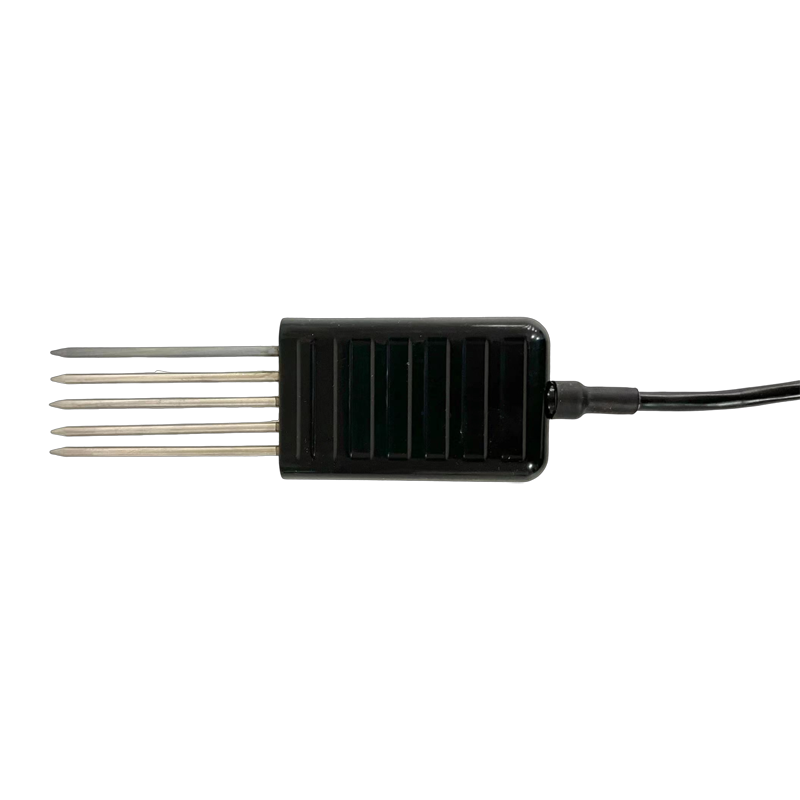 | 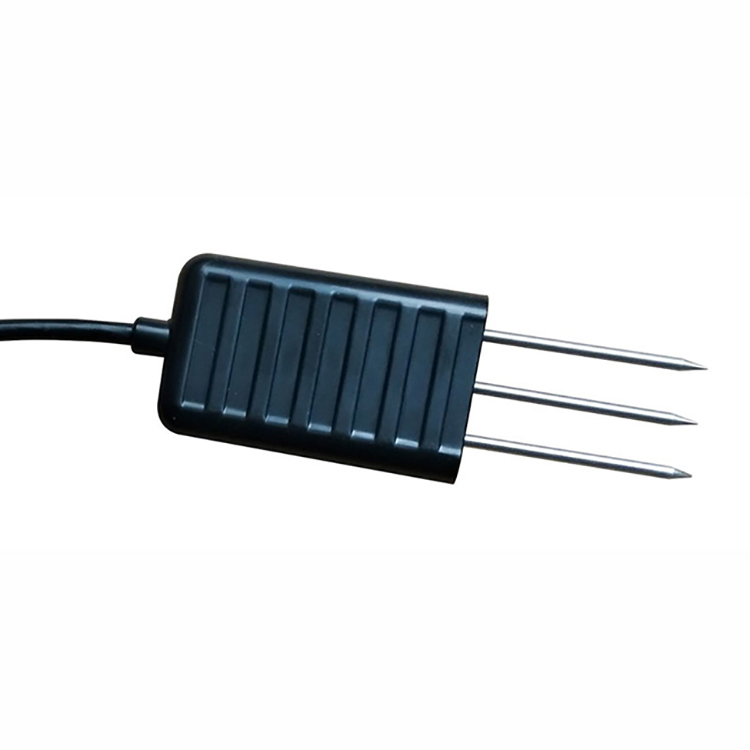 |
| Soil NPK Sensor | Soil Moisture Temperature sensor | 7 in 1 Soil Integrated Sensor | 3-in-1 Soil Temperature Humidity EC Sensor |
 |  |  | 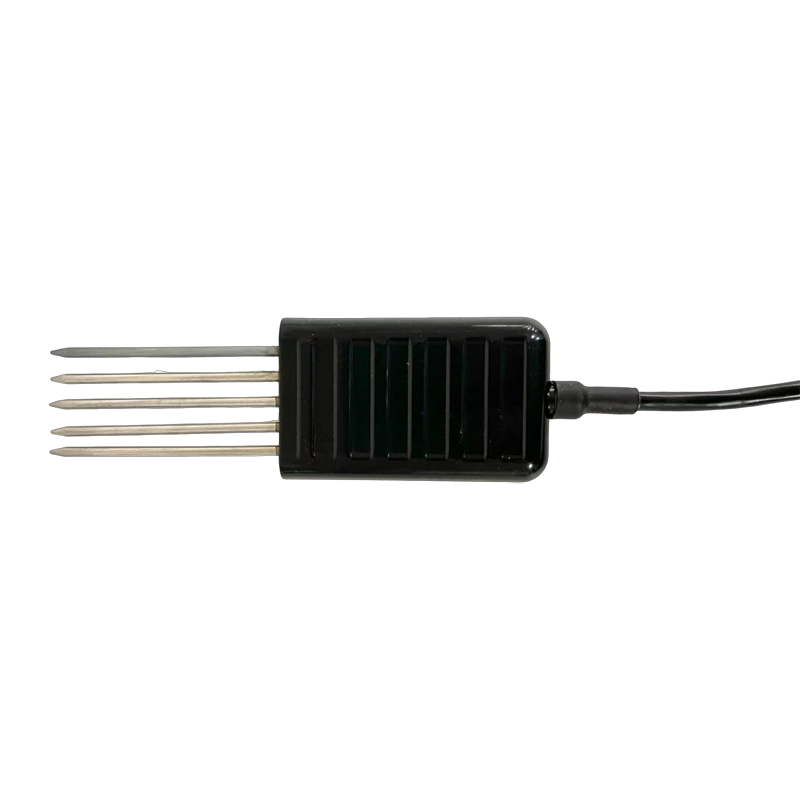 |
| Soil pH sensor | Soil EC Sensor | 4-in-1 Soil Temperature Moisture EC Salt Sensor | 8 in 1 Integrated Soil Sensor RS485 |
1. Select a suitable measurement location: Avoid hard or irregular objects such as stones, tree roots, etc., and choose a flat, representative soil area for measurement.
2. Prepare the measurement environment: throw away the top layer of soil in accordance with the required measurement depth, and keep the original degree of soil looseness and tightness underneath, so that the sensor can accurately measure soil moisture.
- Quick measurement: directly inserted vertically into the soil, suitable for rapid measurement.
- Buried measurement: digging a pit and then inserted horizontally, suitable for long-term monitoring, if you need to measure continuously for a long time, you can consider fixing the sensor in the soil to avoid frequent insertion and removal of soil damage.
- Depth: Determine the insertion depth according to the crop root depth and monitoring needs.
- Stability: Ensure the sensor is stable to avoid movement affecting data accuracy.
Note: When inserting vertically into the soil, you need to hold the sensor body tightly and insert it vertically into the soil to a predetermined depth. Do not shake it from side to side during insertion to ensure that the sensor is in close contact with the soil.
- Connection circuit: For RS485 sensors, connect to a controller or data collector that supports RS485 communication.
- Power supply: Provide appropriate voltage (e.g. 5V to 24V) according to the sensor specifications.
- Cabling: Pay attention to waterproof and signal interference, use appropriate cables.
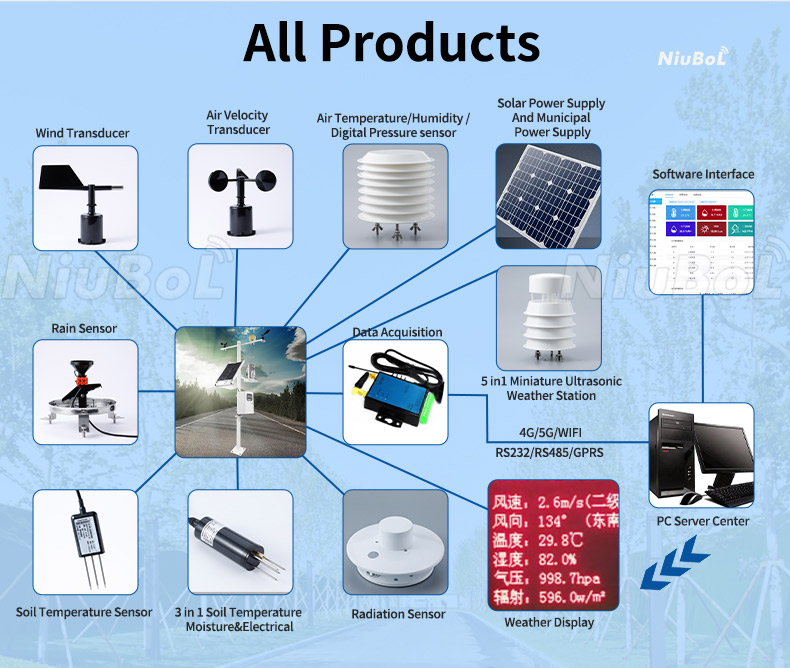
-Reading data: According to the output mode of the sensor (e.g. voltage, current, digital signal, etc.), use the appropriate equipment or software to read the soil moisture data.
-Record data: Record the read data for subsequent analysis and processing. It is recommended to take the average value of multiple measurements within a small range of the same measurement point to improve the measurement accuracy.
- Software Integration: Use the supporting software or self-built system to read the data transmitted by RS485.
- Data analysis: Adjust the irrigation plan according to the data to optimize the use of water resources.
- Threshold setting: Utilize digital outputs (e.g. DO) to automatically trigger the irrigation system when a specific humidity threshold is reached.
1. Regular calibration: In order to maintain the measurement accuracy of the sensor, it needs to be calibrated regularly. The specific calibration method can refer to the sensor manual or consult the supplier.
2. Avoid damage: In the process of using the sensor, we should pay attention to avoid strong impact or drop, so as not to damage the internal components of the sensor.
3. Storage environment: When not in use for a long time, the sensor should be stored in a dry, ventilated place to avoid moisture or corrosion.
4. Inspection: Make sure the connection is stable and check the performance of the sensor regularly.
Through the above steps, you can correctly use the soil moisture sensor to monitor soil moisture, providing strong support for agricultural production, landscaping and other fields.
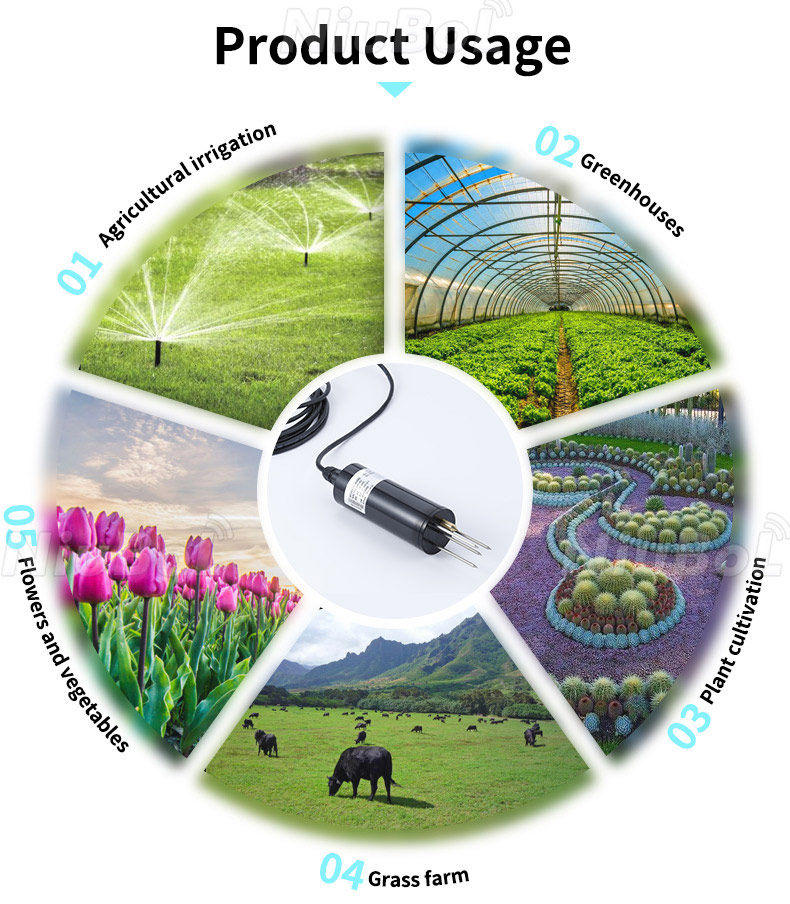
As a precise and practical monitoring tool, soil moisture sensor has a wide range of applications in many fields. The following are its main application scenarios:
Precision agriculture: Soil moisture sensors can measure soil moisture content in real time, continuously and accurately, providing farmers with an accurate basis for irrigation. By monitoring soil moisture, farmers can implement on-demand irrigation, reduce the occurrence of overflooding and water shortages, improve water utilization efficiency, reduce production costs, and help improve crop yield and quality.
Water-saving irrigation: Based on the data from the soil moisture sensor, the irrigation system can be intelligently controlled to realize water-saving irrigation. This helps to reduce the waste of water resources, especially in areas where water is in short supply.
Nature reserves: In nature reserves, wetland ecosystems and forest areas, soil moisture sensors can help researchers monitor soil moisture dynamics in real time, reveal the water cycle process between soil-vegetation-atmosphere, and provide scientific basis for ecological restoration, water conservation and biodiversity protection.
Disaster prevention: soil moisture monitoring can also predict the occurrence of droughts, floods and other natural disasters, providing important data support for disaster prevention and response.
Refined management: In modern greenhouses, soil moisture sensors combined with automated control systems can automatically adjust the irrigation schedule according to actual needs, realizing refined management and intelligent control. This helps to promote healthy crop growth and improve economic efficiency.
Plant growth monitoring: soil moisture sensors can monitor the moisture content in garden soil, providing important data support for the growth of garden plants. By reasonably controlling the amount and timing of watering, it can optimize the plant growth environment and improve the effect of gardening.
Landscape planning and design: In the process of landscape planning and design, soil moisture sensors can help designers and engineers to better understand the soil moisture situation, so as to develop a more scientific and reasonable planning program.
Soil fertility monitoring: through long-term monitoring of soil moisture and other parameters, you can understand the trend of soil fertility changes, providing a scientific basis for soil improvement.
Scientific research: soil moisture sensor in plant physiology research, soil science research and other fields also have important applications, to provide researchers with accurate experimental data.
1.NBL-S-THR Soil Temperature Moisture Sensor datasheet
NBL-S-THR-Soil-temperature-and-moisture-sensors-Instruction-Manual-V4.0.pdf
2. NBL-S-TMC Soil Temperature Moisture EC Sensor datasheet
NBL-S-TMC-Soil-temperature-and-moisture-conductivity-sensor.pdf
3. NBL-S-TM Soil Temperature Moisture Sensor datasheet
NBL-S-TM-Soil-temperature-and-moisture-sensor-Instruction-Manual-4.0.pdf
4. NBL-S-TMCS Soil Temperature, Moisture, Conductivity and Salinity Integrated Sensor
NBL-S-TMCS-Soil-Temperature-Humidity-Conductivity-and-Salinity-Sensor.pdf
5. NBL-S-TMCS-7 Soil Temperature, Moisture, NPK, Conductivity and pH Integrated Sensor
7-in-1-Soil-Composite-Sensor-Manual.pdf
4. NBL-S-TMCS-8 Soil Temperature, Moisture, NPK, pH, Conductivity and Salinity Integrated Sensor
8-in-1-Soil-Composite-Sensor-Manual.pdf
In summary, soil moisture sensor is a key tool for monitoring soil moisture, widely used in agriculture, ecology, gardening and other fields. It can provide accurate soil moisture data, help farmland irrigation, ecological protection, facility agriculture and garden management, realize the efficient use of water resources and scientific management of crops, and is an important technical means to promote precision agriculture and ecological environmental protection. Through rational application, it can effectively improve agricultural yield and ecological benefits.
Related recommendations
Sensors & Weather Stations Catalog
Agriculture Sensors and Weather Stations Catalog-NiuBoL.pdf
Weather Stations Catalog-NiuBoL.pdf
Related products
 Combined air temperature and relative humidity sensor
Combined air temperature and relative humidity sensor Soil Moisture Temperature sensor for irrigation
Soil Moisture Temperature sensor for irrigation Soil pH sensor RS485 soil Testing instrument soil ph meter for agriculture
Soil pH sensor RS485 soil Testing instrument soil ph meter for agriculture Wind Speed sensor Output Modbus/RS485/Analog/0-5V/4-20mA
Wind Speed sensor Output Modbus/RS485/Analog/0-5V/4-20mA Tipping bucket rain gauge for weather monitoring auto rainfall sensor RS485/Outdoor/stainless steel
Tipping bucket rain gauge for weather monitoring auto rainfall sensor RS485/Outdoor/stainless steel Pyranometer Solar Radiation Sensor 4-20mA/RS485
Pyranometer Solar Radiation Sensor 4-20mA/RS485
Screenshot, WhatsApp to identify the QR code
WhatsApp number:+8615367865107
(Click on WhatsApp to copy and add friends)
